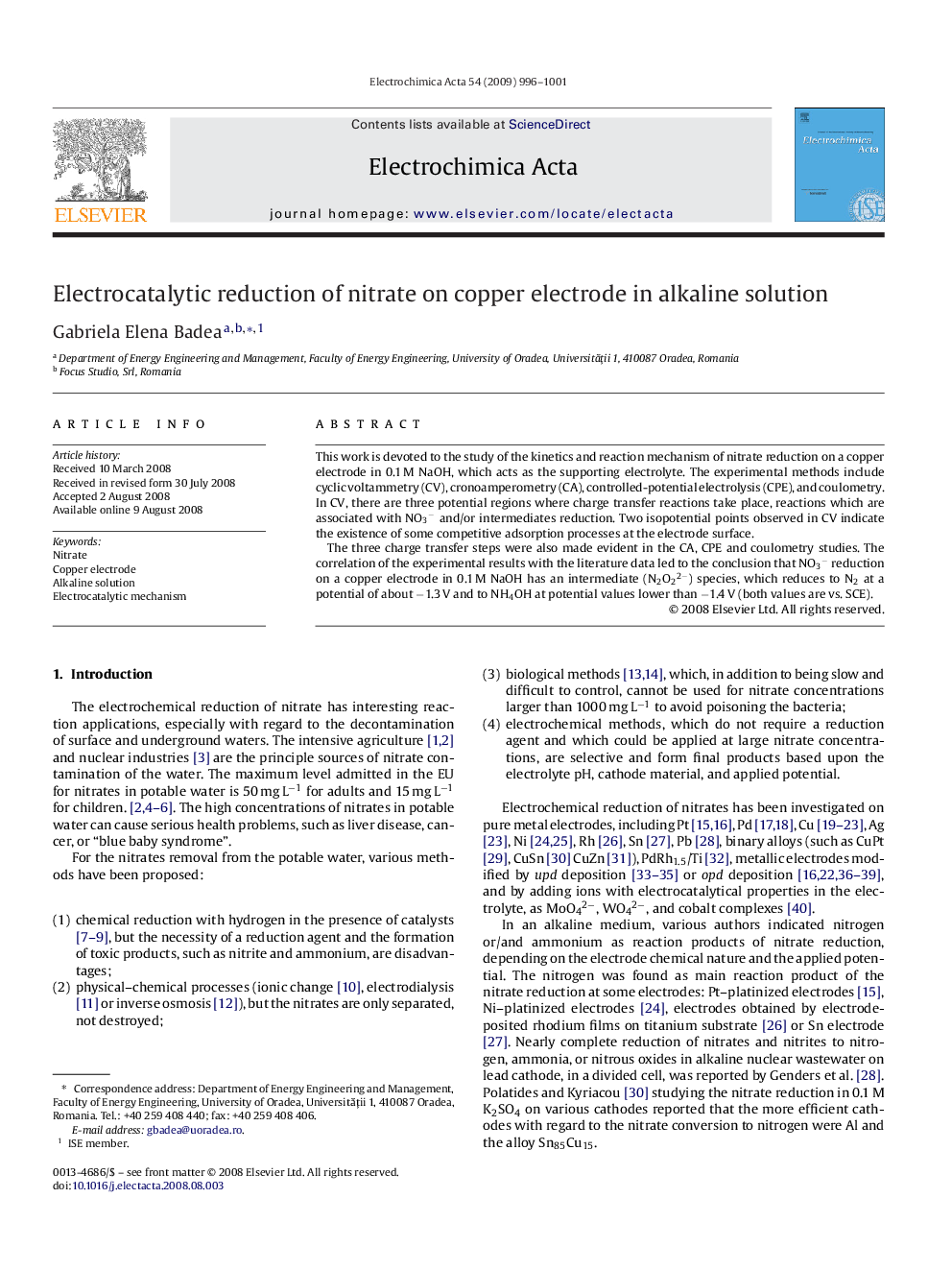| Article ID | Journal | Published Year | Pages | File Type |
|---|---|---|---|---|
| 193926 | Electrochimica Acta | 2009 | 6 Pages |
This work is devoted to the study of the kinetics and reaction mechanism of nitrate reduction on a copper electrode in 0.1 M NaOH, which acts as the supporting electrolyte. The experimental methods include cyclic voltammetry (CV), cronoamperometry (CA), controlled-potential electrolysis (CPE), and coulometry. In CV, there are three potential regions where charge transfer reactions take place, reactions which are associated with NO3− and/or intermediates reduction. Two isopotential points observed in CV indicate the existence of some competitive adsorption processes at the electrode surface.The three charge transfer steps were also made evident in the CA, CPE and coulometry studies. The correlation of the experimental results with the literature data led to the conclusion that NO3− reduction on a copper electrode in 0.1 M NaOH has an intermediate (N2O22−) species, which reduces to N2 at a potential of about −1.3 V and to NH4OH at potential values lower than −1.4 V (both values are vs. SCE).
